- Matthew Amundsen
- Albums and Singles
Apparently quite enamored of composers like Reich, Glass, and Riley, Dwinell uses repetition in much the same way as they do but with instruments like acoustic guitars, banjos, and mandolins rather than orchestral or symphonic instruments. It's a nice effect, but it gets dull after a while, especially since this type of music is fairly static, lacking any peaks or valleys to give a sense of movement. Also, considering that these basic ideas were already developed and popularized by others many years ago makes them a little less significant. However, when Dwinell imparts something of himself through the use of his vocals, the songs take off.
Using repetition as a compositional tool rather than a foreground element serves Dwinell's singing well, as evidenced on songs like "Candide," the playful "Sentry at Eleusis," and the sublime "Lost In the Desert, Near Death." To be fair, there are a few instrumentals in the vein of his heroes that add something different to their work, like the jazz-inflected "My Song Before the Gates" or the polyrhythmic "Processional," but for the most part, Dwinell's songs work better when he puts aside his obvious influences. There's still plenty of beauty to be found on this album, even if some of it sounds vaguely like things I've heard before.
Read More
- Matthew Amundsen
- Albums and Singles
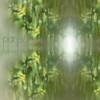
Calling the album Photosynthesis is pretty obvious for a band named Plants, and unfortunately most of the song titles similarly lack poetry. Convenient rather than descriptive titles like "Seedling," "Roots," and "Tumbleweed" stretch the concept a little too thin. Usually this wouldn't bother me, but I also had difficulty determining exactly what the group is trying to express, and these titles didn't help. I suspect a certain reverence for the plant kingdom and its structural parts because of the gravity of the atmospheric instrumentals on the album, yet I don't really get a sense of why the group honors these things. Titles less generic would have gone a long way toward providing a context for these ideas. Even so, I did like quite a bit of the material here.
The lush and gorgeous opening title track is a great introduction, and equally compelling is the hazy "Roots." "Seedling," one of the few tracks with vocals, has a pleasant vibe and melody. On the other hand, "Seedling Two" isn't particularly memorable, nor is "Tumbleweed," apart from some unusual banjo playing. My favorite track is easily "Seedling Three" because it best incorporates the group's folk and drone tendencies, making it the album's most fully realized song. An album of others like these would have been stunning, but instead the group comes just shy of making something truly remarkable.
Read More
- Administrator
- Albums and Singles
August 2nd, 2007
Legendary culture jam-band Negativland announces upcoming release of My Favorite Things DVD (complete with doo-wop covers CD by the 180 Gs) and reissue of its 1983 conceptual masterpiece, A Big 10-8 Place.
Group launches first East Coast tour in seven years with a Time Out New York profile and performance at NYC’s Highline Ballroom.
Declared heroic by their peers for refashioning culture into what the group considers to be more honest statements, Negativland suggests that refusing to be original, in the traditional sense, is the only way to make art that has any depth within commodity capitalism... – The New York Times
Twisted genius...compelling...parody and satire as a grass roots weapon of consumer resistance. – Rolling Stone
Negativland isn't just some group of merry pranksters; its art is about tearing apart and reassembling found images to create new ones, in an attempt to make social, political and artistic statements. Hilarious and chilling. – The Onion
Negativland’s greatest hits become all new moving pictures in the amazing and long awaited DVD release of My Favorite Things, to be issued via the Other Cinema (Sonic Outlaws, So Wrong They’re Right) imprint on October 23rd. Years in the making, this package is an epic career-capping project from Negativland. Sure to please the group’s old fans, this very accessible DVD is also an incredible introduction to Negativland's work for new ones. Created with a crew of 18 other experimental filmmakers from all over the USA, Our Favorite Things is a collaborative project that takes a striking visual leap into the same legally gray area that Negativland has been exploring with sound for the last 27 years. A dark and charming film collection of unforgettable collage and classic cut-up entertainment for all ages, it also comes with over 90 minutes of bonus material, as well as a truly silly and bizarre 18-minute bonus CD of 100% acapella versions of Negativland's work by The 180 Gs, a five-person black acapella group from Detroit, that has endeavored to “cover” Negativland’s cut up collage work in R 'n B, Doo-Wop, and Gospel styles. The resulting album 180 D’Gs To The Future! is extremely fun, funny, and very weird.
Also in the works is the long awaited re-issue of Negativland's legendary 1983 difficult listening conceptual suburban epic A Big 10-8 Place. Over three years in the making, and with ten-thousand-million-billion analog tape splices, this insanely cut-up and uniquely weird release remains the hands down favorite of many fans of Negativland's work. This re-issue, due out on September 25th, comes with a 60-minute bonus DVD of Negativland's No Other Possibility video, created in the mid-1980’s.
As if all of this Negativland activity weren’t enough to cause a government reaction, the band will bring a new version of its weekly radio broadcast (“Over the Edge” – on the air since 1981) to the live stage, mixing music, found sounds, found dialog, scripts, personalities, and sound effects within a “radio” theater-of-the-mind. Time Out New York featured the band this week in anticipation of its first New York City performance since a sold-out show at Irving Plaza in 2000 (LINK). “It's All In Your Head FM” is a two-hour-long, action-packed look at monotheism, the supernatural God concept, and the all-important role played by the human brain in our beliefs. Dr. Oslo Norway is your “radio” host, and Christianity and Islam are the featured religions, as Negativland asks you to contemplate some complex, serious, silly, and challenging ideas about human belief in this audio cut-up mix best described as a “documentary collage”. “It's All In Your Head FM” is a compelling and uniquely fun presentation of sticky theological concepts, which has actually been known to provoke arguments for days after the show is over.
Opening the NYC performance will be two other significant contributors to the history of re-appropriation of found sounds – Steinski and Double Bee. In 1983, Tommy Boy Records held a promotional contest, in which entrants were asked to remix the single “Play That Beat, Mr. D.J.” by G.L.O.B.E. and Whiz Kid (members of Afrika Bambaataa's Soulsonic Force). The entry submitted by Steinski and Double Dee, “Lesson 1 — The Payoff Mix” was packed with sampled appropriations from other records -- not only from early Hip-Hop records and from Funk and Disco records that were popular with Hip-Hop DJs, but with short snippets of older songs by Little Richard and The Supremes, along with vocal samples from sources as diverse as instructional tap-dancing records and Humphrey Bogart films.
Double Dee and Steinski followed up this success with “Lesson 2 — The James Brown Mix” in 1984, which began with a sample from The War of The Worlds before quickly running through a montage of memorable breaks from classic James Brown records, with sampled appearances by Dirty Harry and Bugs Bunny.
In 1985 came “Lesson 3 — The History of Hip-Hop Mix” which attempted a survey of the great breakdancing favorites, along with snippets from Johnny Carson and Hernando's Hideaway. The Illegal Art label, home to notorious musical collage artist Girl Talk will issue a definitive compilation of this long unavailable material in 2008.
Negativland Live:
08/02 New York, NY Highline Ballroom (tune in live at www.free103point9.org )
08/03 Philadelphia, PA International House
08/04 Baltimore, MD The Church on St. Paul St.
08/05 Washington DC Warehouse Theater
08/07 Charlottesville, VA Satellite Ballroom
Our Favorite Things DVD Chapter Listing:
180 d’Gs To The Future Bonus CD Track Listing:
Release Date: October 23rd, 2007
01. Learning To Communicate
02. No Business
03. Gimme The Mermaid (VIDEO )
04. U2
05. Time Zones
06. Freedom’s Waiting
07. Yellow, Black and Rectangular
08. The Bottom Line
09. Guns
10. Over The Hiccups
11. The Mashin’ of The Christ
12. KPIX News
13. Truth In Advertising
14. Why Is This Commercial?
15. The Greatest Taste Around
16. Taste In Mind
17. Humanitarian Effort
18. Drink It Up
19. My Favorite Things
01. Intro (Everything’s Going Fine)
02. Christianity Is Stupid (MP3 )
03. Helter Stupid (Excerpt)
04. Greatest Taste Around
05. I Still Haven’t Found What I’m Looking For
06. Car Bomb
07. A Nice Place To Live
08. Seat Bee Sate
09. Roy Storey’s Sports Line
10. I Am God
11. Playboy Channel
12. Oven Noises
13. Theme From A Big 10-8 Place (Live)
A Big 10-8 Place Track Listing:
Release Date: September 25th, 2007
01. Theme from a Big Place
02. A Big 10-8 Place, Pt. One
03. Clowns and Ballerinas
04. Introduction
05. Four Fingers
06. 180-G, A Big 10-8 Place, Pt. Two
More About Negativland:
“Negativland, longtime advocates of fair use allowances for pop media collage, are perhaps America's most skilled plunderers from the detritus of 20th century commercial culture. Negativland are media addicts who see society suffering under a constant barrage of TV, canned imagery, advertising and corporate culture...the band's latest project is razor sharp, microscopically focused, terribly fun and a bit psychotic. – Wired
“Brutally hilarious...a compelling argument for the anti-copyright movement.” – Village Voice
“Fearless artistes or foolhardy risk-takers.... by constantly haranguing the audience with authentic advertising spiel and highlighting its transparency, they kill the messenger, kill the message and produce highly entertaining art simultaneously. – L.A. Weekly
Since 1980, the four or five Floptops known as Negativland have been creating records, fine art, video, books, radio and live performance using appropriated sound, image and text. Mixing original materials and music with things taken from corporately owned mass culture, Negativland re-arranges these bits and pieces to make them say and suggest things that they never intended to. In doing this kind of cultural opposition and “culture jamming” (a term coined by Negativland in 1984), Negativland have been sued twice for copyright infringement.
Okay, but what, you still ask, is Negativland exactly? That's hard to answer. Negativland definitely isn't a “band,” though they may look like one when you see their CDs for sale in your local shopping mall. They're more like some sort of goofy yet serious European-style artist/activist collective - an unhealthy mix of John Cage, Lenny Bruce, Pink Floyd, Bruce Connor, Firesign Theatre, Abbie Hoffman, Robert Rauschenberg, 1970's German electronic music, old school punk rock attitude, surrealist performance art, your high school science teacher…and lot's more.
Over the years Negativland's “illegal” collage and appropriation based audio and visual works have touched on many things - pranks, media hoaxes, media literacy, the evolving art of collage, creative anti-corporate activism in a media saturated multi-national world, the bizarre banality of suburban existence, file sharing, intellectual property issues, wacky surrealism, evolving notions of art and ownership and law in a digital age, artistic and humorous critiques of mass media and culture, and, of course, so-called “culture jamming” (a term now thoroughly and somewhat distastefully commodified by Adbusters Magazine.)
While they have been, since getting sued, aggressively and publicly involved in advocating significant reforms of our nation's copyright laws, and are often perceived as creative and funny shit-stirring anti-corporate activists, Negativland are artists first and activists second, not the other way around. Their art and media interventions have (often naively) posed questions about the nature of sound, media, control, ownership, propaganda and perception, with the results of these questions and explorations being what they release to the public. Their work is now referenced and taught in many college courses in the US, has been written about in over 30 books (including No Logo by Naomi Klein, Media Virus by Douglas Rushkoff, and various biographies of the band U2), cited in legal journals, and they often lecture about their work here and in Europe.
In 1995 Negativland released a 270 page book with 72 minute CD entitled Fair Use: The Story of the Letter U and the Numeral 2. This book documented their infamous four-year long legal battle over their 1991 release of an audio piece entitled U2. They were the subjects of Craig Baldwin's 1995 feature documentary Sonic Outlaws. Negativland also created the soundtrack and sound design for Harold Boihem's 1997 documentary film The Ad and The Ego, an excellent in-depth look into the hidden agendas of the corporate ad world that goes very deep into the gross and subtle ways that we are adversely affected by advertising.
Negativland is interested in unusual noises and images (especially ones that are found close at hand), unusual ways to restructure such things and combine them with their own music and art, and mass media transmissions which have become sources, and subjects, of much of their work. Negativland covets insightful wackiness from anywhere, low-tech approaches whenever possible, telling humor, and vital social targets of any kind. Without ideological preaching, Negativland often becomes a subliminal culture sampling service concerned with making art about everything we aren't supposed to notice.
A complete discography of Negativland's work is available at the band’s website.
On The Web:
www.negativland.com
www.myspace.com/officialnegativland
Read More
- Scott Mckeating
- Albums and Singles
There are few, if actually any, musical series’ at the moment as interesting as Jandek’s chronological live releases. With his twenty five year old ‘Texan loner’ tag finally being shed, his live releases are revealing a whole experience to fans of his disturbingly bare vocal/guitar confessions. After the indifferent Austin Sunday release, Jandek seems to have taken some wise soul’s advice, getting players with improvisational chops in instead of local backroom bums.
Backed by Chris Corsano on drums, Matt Heyner on bass and Loren Connors on guitar, the oddly subtitled ‘Afternoon of Insensitivity’ (odd because Jandek sounds anything but insensitive over these two discs) is his most composed sounding set to date. Jandek spends the LP away from his customary live set-up of electric guitar and sits behind the staple instrument of sanctum seekers, the organ (well, a Korg synth set to organ). He certainly seems able to express himself more traditionally through this instrument, as opposed to his signature untrained guitar style. This trio of musicians collude in a mutual conspiracy to shelter and protect Jandek from slipping into skeletal soloisms, perhaps overexposing the natural spookiness of the organ. Loren Connors plays out of his self, his guitar opening up in liquid swirls, his pedals spreading sound across the show in great strokes.
The rhythm section moves steadily in the footsteps of the organ, much of Corsano’s playing like pensive, beautiful footsteps beneath Connors and Jandek. His role feels more obviously rhythmic than Alex Neilson’s drumming work on three of the previous live releases, snare shots like candle points in the fog. Vocally, there’s an initial surprise as he actually sounds unsure about what he’s saying, perhaps even a little shy. Though why Jandek should choose his fiftieth album to get all reticent on us is anyone’s guess. This slip doesn’t last long though (stage fright?) and soon he’s back to his undulant matter of fact confessions. It’s interesting to see that brief glimpse of something behind the impassive mask, Jandek normally ignoring the crowd’s presence beyond a few rare recorded smiles. Manhattan Tuesday follows the usual lyrical routes, the sheer strength of his imagery and questions always overcoming his dependence on the themes of isolation, alienation and lost love. Its beginning to really feel like Jandek has been slowly becoming more capable of accurately describing his incipient awareness of the internal world.
Read More
- Administrator
- Albums and Singles
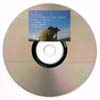 Scuttlebutt around the intertubes is that no, this is not the product of one "Karen Tregaskin" discovered via a Myspace site, but actually good ol' Richard D. James. Regardless of its pedigree, it's a nice slab of throwback electro that is as fascinating for nostalgic reasons as it is for its overall listening value.
Scuttlebutt around the intertubes is that no, this is not the product of one "Karen Tregaskin" discovered via a Myspace site, but actually good ol' Richard D. James. Regardless of its pedigree, it's a nice slab of throwback electro that is as fascinating for nostalgic reasons as it is for its overall listening value.
From the look and sound of this disc, it certainly could be an Aphex Twin related project, from the abstract song titles, ultra minimal packaging, and an overwhelming playful, yet complex arrangement of analog synths. However, the sound sticks closer to his AFX moniker, where rather than spastic programming and stuttering drums, the sound is much more indebted to early 1980s electro and Detroit techno. The Tuss wear his/her/their nostalgia openly on "Synthacon 9," where an intentionally stiff 808 drum track is augmented with synth lines that could have been stolen from Prince circa 1982, along with a bit of playful reverb thrown in for good measure. Other than the more contemporary drum & bass elements that seep in towards the end, this could very easily be a 25 year old track. "Shiz Ko E" is another treat for the older folks, fragments of Commodore 64 synthetic speech, acid house sequences, and a pitch bent synth line straight from the backrooms of the Kool and the Gang compound.
The disc doesn't rely solely on memories of sweaty 80’s clubs though, there are a good deal of tracks that show more current elements as well. "Last Rushup 10 F" has the hyperspeed breakbeats that are expected in this day in age, but keeps things grounded with actual melodies, vocoder synths, and more playful applications of reverb, which is never a bad thing. Breakbeats of a more jazzy variety (think Squarepusher) also show up on "Rushup I Bank 12" with cheap computer sound effects and even a bit of lounge-y piano to go along with the 303 squelch.
Whether this is actually Richard D. James or not is somewhat irrelevant, because it is a damn good disc of old school techno that manages to bring up the nostalgia of the early days without sounding too dated or insincere. One can at least hope that The Tuss makes up for the lack of productivity from a certain Rephlex label head, hint hint.
samples:
Read More
- Administrator
- Albums and Singles
"Northern’s debut offering, another in Infraction’s sweet sleep-stream of supine-inclined ambience,
are bros of Canada, Davin and Kevin Chong, dealers in heating up cool digitalia with toasty warm
sample food. Drawn is a study in turning lost to found sound, capturing momentary guitar passes,
and releasing them, subtly altered, into enduring motifs, finding felicity in the fleeting and
making it stay awhile to become compelling. What happens is that this Northern music initially
seems to drift by asking nothing from you, but you gradually find yourself, oddly, wanting from
it. And it yields graciously. In being quiet, unwanting, you want to be quiet with it. It’s
the New Quiet.
The album opens with “Coasting” in zones that distantly recall those charted by Loscil
(Submers and First Narrows), the aqueous becoming a subtle leitmotif (cf. the later “Pacific”).
The architecture becomes more digitally-enhanced, espousing sound 12k principles. Shuttle358,
Taylor Deupree, and Fourcolor would all seem to be Northern touchstones, sharing a similar
delight in deployment of small gesture processed loopstrata, fluting, floating, fibrillating –
at once a surface over which to skitter a glitch-scatter and a cushion for repose. No fear of
Northern exposure here at the warmer end of digital, gently meshing textures, lapping into
laptop. It’s a deceptively small sound that can get big on you, like on “Migrate”, which
dwells in semi-stasis just long enough to lull, then spills over with swells before slipping
out of sight. Drawn’s digital means of generation takes on an increasingly naturalistic
sounding aspect helped by its manipulated guitar-enriched intake. The guitar tradition
drawn on Drawn is the ostinato introspections and plucked intimacies of 1 mile North,
Labradford, and Dan Abrams. Ostensibly different from Infraction stable signature sound,
it somehow sits comfortably within it.
The first 150 copies come bountifully endowed with a bonus cd-r, Jessa (INFX 025), a collection
which signals the next phase in Northern development, though the seeds of Jessa’s future-indicative
are retievable from Drawn’s present-past. It evidences a deeper denser dronier zone-out music,
minimizing digital intervention and renouncing microsonic patter. The gestures here are towards a
half-light almost-orchestralism, moving from the likes of Marsen Jules and the secular sacral of
Eluvium, shoulder-to-shoulder with the submersible slowcore starriness of The Lid (whose time of
greatest influence and recognition has finally now come). Sidenote: Northern bid their myspace
visitors: “be quiet with us.” More resonances of SotL, and their “Be Little with Me”? Sshhh. It’s
Northern. It’s the New Quiet." (A. Lockett)
Comes housed in Stoughton style mini-lp gatefold sleeve. Down to 10 copies of the limited edition!
Info : www.infractionrecords.com/shop.html
www.myspace.com/northerncanada
Listen : www.infractionrecords.com/audio.html
Read More
- Administrator
- Albums and Singles
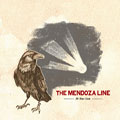 This set marks the end of Tim Bracy and Shannon McArdles' marriage and musical collaboration. 30 Year Low is a terrific document of the death of love, the inevitability of aging, and is proof positive that in all musical genres, quality matters more than anything else.
This set marks the end of Tim Bracy and Shannon McArdles' marriage and musical collaboration. 30 Year Low is a terrific document of the death of love, the inevitability of aging, and is proof positive that in all musical genres, quality matters more than anything else.
This is a sophisticated album invested with personal conviction. The Mendoza Line handle the subject matter (bars, bedrooms, heartbreaks and fears), and the unadorned old-school instrumentation (guitars, bass drums, piano) with a masterful aplomb that lifts 30 Year Low above the average alt-country rock. Mixing the personal and political, the opening track "Since I Came" is sung from the perspective of a pregnant immigrant laborer at a chicken factory in the backwoods of Georgia. Her husband has been killed, possibly murdered, leaving her to survive with their two daughters. The song shuffles along, sad and subtle, but the smell of feathers and the fear of unwanted sexual attention are overwhelming. McArdle’s voice captures feelings of being undocumented and vulnerable, lonely and fleetingly suicidal, before emerging defiant and determined: "Could I find my way out/ Could my two girls grow up to be free/ If you ever touch a hair on their heads/ If you ever look at them the way you do me." "Since I Came" could stand as a companion piece to Merry Men, Carolyn Chute's book about ordinary people discarded by President Reagan's voodoo economics.
"Aspect Of An Old Maid" is a splendid mid-tempo duet, on which the accusatory insights pick up. It has an old-fashioned quality stemming from the decorous harmonica and a words-to-the-bar ratio that was not even "the future of rock and roll" circa 1975. Disgust and contempt have never sounded so much fun as on "31 Candles," which takes the album up another gear. On this song, McArdle spits in the face of infidelity, naivety, and music biz bullshit. The words of Hunter S. Thompson come to mind: "The music business is a cruel and shallow money trench, a long plastic hallway where thieves and pimps run free, and good men die like dogs. There's also a negative side."
When couples split up there is a tendency for friends to think they must choose sides and which person to stay in touch with. To my ears, Shannon McArdle's voice is the more versatile, and the way she sings the word "fuck" is very endearing. After "I Lost My Taste," Timothy Bracy's drawl was really getting on my nerves and I was certain that McArdle would be the only one I would listen to in future. It was a surprise then, that Bracy's slow composition "Love On Parole" turned out to be a highlight. Mainly accompanying his voice with piano and sparse drumming, he dissects the rearrangements, truces, terms and conditions which lovers go through in a relationship. The song is part confessional, part ode to uncomplicated lust, part verbose rationale, but wholly convincing and sad.
Released along with the mini-album is The Final Remarks of the Legendary Malcontent: a bonus disc of live tracks, radio appearances, rehearsal takes, covers, and demos. The pale renditions of other people's breakup songs from some classic albums, demonstrate that The Mendoza Line sound best when communicating in the pace, tone and cadence of their own inner voices, (though on 30 Year Low they do a fine version of the late Jimmy Silva's "Tell It To The Raven"). The willful sloppiness will appeal to those who enjoy the warts-and-all approach or who simply must hear them clump through Cole Porter or Richard Thompson's "Withered And Died." I wish it had been released separately, because 30 Year Low has an almost perfect balance of hurt and toughness, care and humor, spunk and weariness, literal and metaphorical. Sweetly, neither songwriter hogs the credits. McArdle and Bracey bring equal craft and humanity to their songs, whether they are rowdy, angry, gentle, bitter, or lewd. This is a smart, beautiful, and harmonious record, all the more poignant with the knowledge that they are at the very point of breaking up.
samples:
Read More
- Administrator
- Albums and Singles
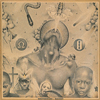 Some 27 years into their notorious career, Whitehouse deserves credit for trying new things. However, don't be mislead by cover artwork: the difference between this and their last album is so small that this one could have probably been called Asceticists 2007.
Some 27 years into their notorious career, Whitehouse deserves credit for trying new things. However, don't be mislead by cover artwork: the difference between this and their last album is so small that this one could have probably been called Asceticists 2007.
Being a Whitehouse "fan" can make for strange bedfellows. In the realms of the avant garde, this admission can cause some people to pass judgment immediately, as they have always been a very polarizing band, most either love or hate them. As one who does like them and has been a fan for a while, I would actually say that they have been on an upwards trend since Quality Time, each album growing a bit greater in depth and variety, and moving past the sophomoric lyrics of "I'm Coming Up Your Ass" that seemed to go so well with cheesy pornography and sticky peep booth floors. The trend towards more psychoanalytic lyrics mixed alongside digital noise (not just the same old mangled Wasp synth from the '80s) have made each new album something I'd look forward to. Which is why, in many ways, Racket is a let-down.
Coming only one year after the previous disc, Asceticists 2006, might have something to do with it. There is no major jump thematically or stylistically between the two albums, and considering the sub 30 minute duration of both discs, it feels like a full length CD being sold as two separate works. The most offensive musical link between the two is "Dumping More Fucking Rubbish," which is a simple re-recording of "Dumping The Fucking Rubbish" from Asceticists with a few extra lines. It's not quite as blatant as rehashing "A Cunt Like You" for both Mummy and Daddy and Cruise, but it comes close.
Factoring that out, there are two compelling instrumental tracks. The sustained siren horns of "Fairground Muscle Twitcher" open the disc just somewhere between ambience and noise. It's not as ear-shredding as most of their work, but it's not going to be heard in a new age shop anytime soon. "The Avalanche" is much more subtle though, almost gentle bell like tones and crystalline rattles that is very out of the norm for this band. The ending instrumental, "Bia Mintatu" amps the noise up a bit more, but not to chaotic levels: bassy horn sounds over African percussion, with a bit of the old power electronics squeal towards the end. William Bennett's fascination with Africa, beginning with the rumored self-created Extreme Music from Africa compilation is in full swing here.
This leaves three remaining tracks of "good ol'" Whitehouse, namely Philip Best and Bennett rambling over a harsh backing track. Best takes center stage on the vocals for the most part, which is more effective in my opinion. His angry rambling always seems to convey a better mood than Bennett's crazy cat lady caterwauling. "Dyad" makes for the best example of this: digitally manipulated djembe rhythms with both tag teaming the vocals with the best rage they could muster.
Racket is not a bad disc by any means; it just seems to follow too closely in its predecessor's footsteps to make it as instantly memorable as prior recent albums have been. I suppose there is no easy way to balance this, because either there is more material released for the listeners that is not as individually notable, or there are long waiting periods between discs. It most likely won't be nominated for any prestigious electronic arts awards this year, but it is still enjoyable, and does show their continuing mediating trend towards more conventional sounds. A "conventional" Whitehouse album sounds absurd, but it may happen in our lifetimes.
samples:
Read More
- Administrator
- Albums and Singles
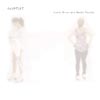 Daniel Menche is one of the most prolific and diverse noise artists currently active in the United States. Never being one to stick with a single theme or style, he has always been apt to try new instrumentation or approaches, and the output can either be scorchingly violent explosions, or subtle, meditative works. Kevin Drumm may not be quite as notorious, but has been steadily carving out his own niche in avant and improvisational circles, often based around his unique playing style on tabletop guitar. So the concept of these two working together is a daunting, yet satisfying one.
Daniel Menche is one of the most prolific and diverse noise artists currently active in the United States. Never being one to stick with a single theme or style, he has always been apt to try new instrumentation or approaches, and the output can either be scorchingly violent explosions, or subtle, meditative works. Kevin Drumm may not be quite as notorious, but has been steadily carving out his own niche in avant and improvisational circles, often based around his unique playing style on tabletop guitar. So the concept of these two working together is a daunting, yet satisfying one.
Drumm is credited with "guitar and noise" while Menche gets the honor of "organ and noise." And, of course, "noise" is the key word here. Over the span of the single 29 minute track, the two abuse whtever distortion boxes they happened to have handy, but go beyond just the expected "wall of sound" and instead create work that has its own subtle nuances. Within the first 10 minutes there is a fuzzed out wall of guitar noise that rivals the middle part of "You Made Me Realise" or the entire discography of Skullflower!, yet a closer listen reveals a subtle, almost hidden percussive element deep in the mix before Menche’s heavily processed organ makes its presence known.
Two thirds of the way through the wall of guitar noise is gone, replaced by hypnotic, psychedelic tones that may be organ, may be guitar, or may be any other noise creation device these two were using. The disc closes on a crunchy old school industrial/power electronics vibe, undulating distorted rhythmic loops and just a hint of musicality.
As a whole, Gauntlet comes on harsh and never lets up for the ride, yet shows the subtleties and nuances often associated with a more compositional type work. Sure, it can probably damage speakers and shoo small rodents out of any building, but slapping on the headphones leads to an entirely different, even more pleasurable experience.
samples:
Read More
- Administrator
- Albums and Singles
 Neal Campbell continues his strong run of releases as Astral Social Club. This album should satisfy fans of his impressive back catalogue, but the music here is good enough to deserve separate treatment and should not be caged in by references to the past.
Neal Campbell continues his strong run of releases as Astral Social Club. This album should satisfy fans of his impressive back catalogue, but the music here is good enough to deserve separate treatment and should not be caged in by references to the past."Tripel Foment" begins similarly to Campbell's other experiments in ambient beatscapes. A bassy, four-on-the-floor techno pluse pushes the track along pleasantly. But the track becomes compelling when he ditches that rhythm and lets his sounds fly untethered. The song keeps its momentum as scraps of sound detritrus float over the mix like luminous insects. At 12 minutes, the pitch bends up sharply as the song hits its crescendo. A looped guitar riff breaks in while a tremeloed static whirls in the foreground, carrying the beat for a few more minutes till a sudden and jolting rest ends the song.
The rest of the album lacks the percussive backbone which holds up "Tripel Foment," but they hold their own unhurried vitality. The title track meanders for more half its length before finding critical mass. Reversed chime swells and subdued guitar picking float lazily into a thicket of resonate beeps and flanged bellowing. The signal processing fights against this dense buildup, diluting the racket until it becomes a limp mass, percolating into gradual silence. "Big Spree" has the same meditative pacing, being built around a cloudy snyth drone peppered with icy, ringing tones that build into a snow storm of radiant sound particulate.
As detailed as each composition on this record is, they are certainly not fast paced. No song here is under 12 minutes, but Campbell is not the kind of musician that mistakes subtlety for monotony. Stale sounds are gently taken away from the mix or processed into something entirely different. The basic components are very simple: a three note guitar figure; pieces of static; some bells and chimes. Isolated from the whole they would sound thin and artificial, but within the tightly wound arrangements of this album they take on a cosmic immensity.
samples:
Read More
- John Kealy
- Albums and Singles
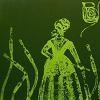
The noise is as aesthetically pleasing as most noise gets but there is no real substance to the two tracks on this single. Nodolby never hit the mind expanding assault of John Wiese nor is it rhythmic enough to pick up on the "Noise is the new rock" approach of Wolf Eyes. Instead it is too directionless, a mess of sound with no real purpose or feeling beyond an attempt to deafen the listener and failing in the attempt.
"Altered Beast" is the better of the two tracks, occasionally during its brief existence there is a flicker of life and an element of danger but mostly it just spits and growls its way to the end of the groove. Nodolby have the right intentions but do not fare well on this release.
Read More

